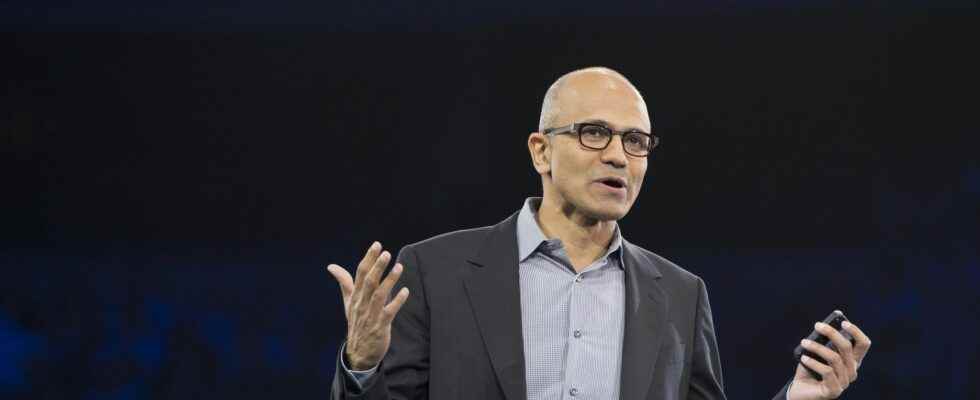The ax fell. Satya Nadella, CEO of Microsoft, confirmed Wednesday, January 18, the elimination of 10,000 positions in the group. A severe cut even if the workforce of the firm is vast: this represents 5% of the approximately 220,000 employees of the company. Microsoft’s situation is not as bleak as it seems, however. Hastily judged outdated in the face of Google, Facebook and Apple in the 2010s, Microsoft has proven wrong those who predicted its decline.
The group has metamorphosed in recent years and is asserting itself as one of the key players in the tech of tomorrow. The reason for this? First, Microsoft has well anticipated the impact of the new so-called generative AIs that OpenAI has been developing for seven years. Founded in 2015 by Elon Musk, Sam Altman and several other eminent tech figures, this laboratory has attracted the cream of AI research into its nets and has developed highly lucrative AI applications with flair.
Today, OpenAI’s Dall-E-2 artificial intelligence is able to provide stunning illustrations on demand. Just tell him in a few words what you want to represent (an astronaut in space, a dish of spaghetti Bolognese, an office full of smiling and dynamic executives…), possibly specifying in what style (realistic, pop art, watercolour, etc.). She takes care of instantly giving life to our idea. A revolutionary tool for the creative industries and, more broadly, for companies that often need visuals for their com campaigns and their PowerPoint.
OpenAI, Microsoft’s joker
ChatGPT, the latest artificial intelligence unveiled by OpenAI, writes surprisingly coherent texts on the subjects of our choice (a plea in favor of the electric car, a poem on unicorns, a synthesis on the industrial revolution… ). She sometimes makes mistakes, but can save humans precious time by composing at lightning speed frames of emails or summaries that we will simply amend.
OpenAI has also developed Codex, an AI capable of translating natural language requests into computer code (example “makes this video game character controllable with the left and right arrow keys on the keyboard”). The name of this cutting-edge laboratory is therefore on everyone’s lips in 2023, but Microsoft did not wait so long to advance its pawns at OpenAI. From 2019, the group led by Satya Nadella invested one billion euros in it, making sure to take advantage of its sophisticated innovations as a priority.
The OpenAI Codex tool thus serves as the basis for Copilot, the AI offered by the huge development platform GitHub acquired by Microsoft in 2018. This artificial intelligence analyzes the code written by a developer in order to guess the lines he is about to type and offer them pre-entered. “Artificial intelligence saves coders a lot of time,” GitHub CEO Tom Dohmke assured us when we met him in October. The manager specified that on average 40% of the code written by people who use Copilot was written by AI, which gives an idea of the power of the tool.
On January 17, Microsoft also announced the availability of several OpenAI tools (Dall-E-2, Codex…) in its Azure cloud. The ChatGPT star will soon be entering it. The close ties between Microsoft and OpenAI even make it possible to envisage a second life for the Bing search engine, which had been crushed by the Google steamroller. By using ChatGPT to respond concisely to requests from Internet users, Bing may be able to steal market share from it. According to Bloomberg and Semaforthe group led by Satya Nadella would also consider a second colossal investment of 10 billion dollars in OpenAI.
Activision’s mega takeover
Microsoft’s strategy in artificial intelligence is not its only masterstroke. Even if the metaverse as described by Mark Zuckerberg is not for tomorrow, the immersive worlds of video games have become a strategic market: in 2021, the sector brewed 214 billion dollars and had 2.7 billion customers. A boom not about to stop: PwC predicts that the video game will generate 321 billion dollars revenue in 2026.
The takeover of the heavyweight Activision Blizzard by Microsoft for 69 billion dollars has therefore shaken the rivals of the Redmond firm. The acquisition is so sensitive that the American FTC has it in its sights, fearing that it will harm competition. The EU is also studying the file under the magnifying glass. But if Microsoft manages to keep its grip, it will have prepared very well for the future.
